Related Research Articles
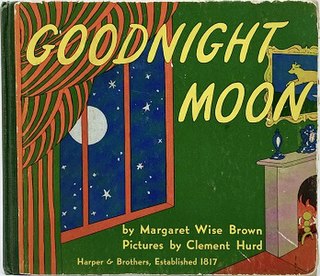
Goodnight Moon is an American children's book written by Margaret Wise Brown and illustrated by Clement Hurd. It was published on 3 September 1947, and is a highly acclaimed bedtime story.

Margaret Wise Brown was an American writer of children's books, including Goodnight Moon and The Runaway Bunny, both illustrated by Clement Hurd. She has been called "the laureate of the nursery" for her achievements.

Little Golden Books is a series of children's books, founded in 1942. The eighth book in the series, The Poky Little Puppy, is the top-selling children's book of all time. Many other Little Golden Books have become bestsellers, including Tootle, Scuffy the Tugboat, and The Little Red Hen. Several of its illustrators later became influential within the children's book industry, including Corinne Malvern, Tibor Gergely, Gustaf Tenggren, Feodor Rojankovsky, Richard Scarry, Eloise Wilkin, and Garth Williams.
Margaret Cecile "Peggy" Parish was an American writer known best for the children's book series and fictional character Amelia Bedelia. Parish was born in Manning, South Carolina to a poor family, attended the University of South Carolina, and received a Bachelor of Arts degree in English. She worked as a teacher in Oklahoma, Kentucky, and in New York. She taught at the Dalton School in Manhattan for 15 years and published her first children's book while teaching third grade there. She authored over 30 books, which had sold 7 million copies at the time of her death.

Clement Gazzam Hurd was an American artist. He is known for illustrations of children's picture books, especially collaborations with writer Margaret Wise Brown including Goodnight Moon (1947) and The Runaway Bunny (1942).
John Thacher Hurd is an American artist and the creator of children's picture books including Mama Don't Allow and Art Dog.
Alice Rose Provensen and Martin Provensen were an American couple who illustrated more than 40 children's books together, 19 of which they also wrote and edited. According to Alice, "we were a true collaboration. Martin and I really were one artist."
Leonard Joseph Weisgard was an American writer and illustrator of more than 200 children's books. He is known best for his collaborations with writer Margaret Wise Brown.
The Lewis Carroll Shelf Award was an American literary award conferred on several books annually by the University of Wisconsin–Madison School of Education annually from 1958 to 1979. Award-winning books were deemed to "belong on the same shelf" as Alice's Adventures in Wonderland and Through the Looking-Glass by Lewis Carroll, having enough of the qualities of his work.
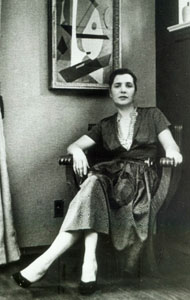
Esphyr Slobodkina was a Russian-American artist, author, and illustrator, best known for her classic children's picture book Caps for Sale. Slobodkina was a celebrated avant garde artist and feminist in the middle part of the 20th century.
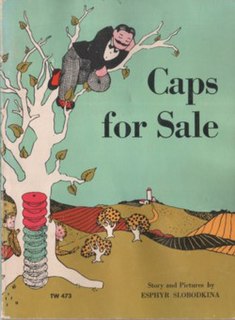
Caps for Sale: A Tale of a Peddler, Some Monkeys and Their Monkey Business is a children's picture book, written and illustrated by Esphyr Slobodkina and published by W. R. Scott in 1940.
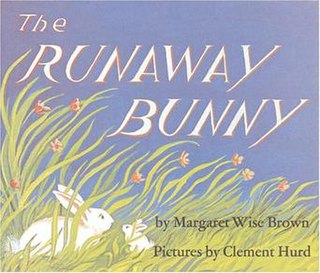
The Runaway Bunny is a 1942 picture book written by Margaret Wise Brown and illustrated by Clement Hurd. The plot deals with a small rabbit, who wants to run away. His mother, however, tells him that "if you run away, I will run after you."
Ursula Nordstrom was publisher and editor-in-chief of juvenile books at Harper & Row from 1940 to 1973. She is credited with presiding over a transformation in children's literature in which morality tales written for adult approval gave way to works that instead appealed to children's imaginations and emotions.
The Northeast Children's Literature Collection (NCLC) is housed at Archives & Special Collections at the University of Connecticut. The purpose of the Northeast Children’s Literature Collection is to preserve the history of the creation of our best literature written for children. Emphasis is given to the perception of children’s literature as a form of art over other educational or social intentions. Archives are collected to document the process of children’s book creation by authors and illustrators in collaboration with agents, editors, designers and publishers.
I Can Read! is a line of beginning reading books published by HarperCollins. The series is rated by level and is widely used to teach children to read English. The first book in the series was Else Holmelund Minarik's Little Bear, published in 1957, and subsequent notable titles have included Amelia Bedelia and Frog and Toad.

The Important Book is a 1949 children's picture book written by American author Margaret Wise Brown and illustrated by Leonard Weisgard. The book describes various common entities and describes some of their major attributes in brief poetic passages, beginning and ending with what Brown considers the key attribute:
— Margaret Wise Brown, The Important Book
Edith Thacher Hurd was an American writer of children's books. She published 70 books in her lifetime, fifty of them illustrated by her husband, Clement Hurd.
Dorothy Agnes Bennett was an American anthropologist, astronomer, curator, publisher, and author. She was the first assistant curator of the Hayden Planetarium, and co-created the Little Golden Books franchise.

My World is an American children's picture book written by Margaret Wise Brown and illustrated by Clement Hurd. The third book in Brown and Hurd's "classic series", it is the "companion" to Brown & Hurd's Goodnight Moon. My World was published in December 1949.
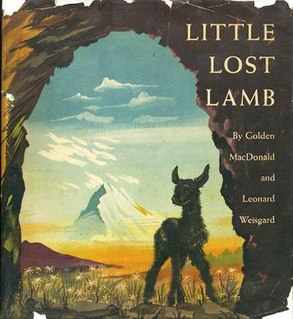
Little Lost Lamb is a 1945 picture book by Margaret Wise Brown writing as Golden MacDonald and illustrated by Leonard Weisgard. The story is about a shepard who goes searching for a missing lamb. The book was a recipient of a 1946 Caldecott Honor for its illustrations.
References
- 1 2 3 4 5 6 7 8 9 Saxon, Wolfgang. "William Rufus Scott, 86, Pioneer In Children's Book Publishing," New York Times (July 25, 1997).
- 1 2 3 Fernando, Anne E. "IN THE GREAT GREEN ROOM: MARGARET WISE BROWN AND MODERNISM," Public Books (November 17, 2015). Accessed May 2, 2016.
- ↑ Popova, Maria. "7 (More) Obscure Children’s Books by Famous “Adult” Lit Authors," BrainPickings (July 25, 2011).
- ↑ Leonard S. Marcus (1997). "Meet Clement Hurd". Enter the World of Margaret Wise Brown. HarperCollins Children's. Retrieved 2014-10-01. Apparently citing Marcus's book, Dear Genius, The Letters of Ursula Nordstrom.